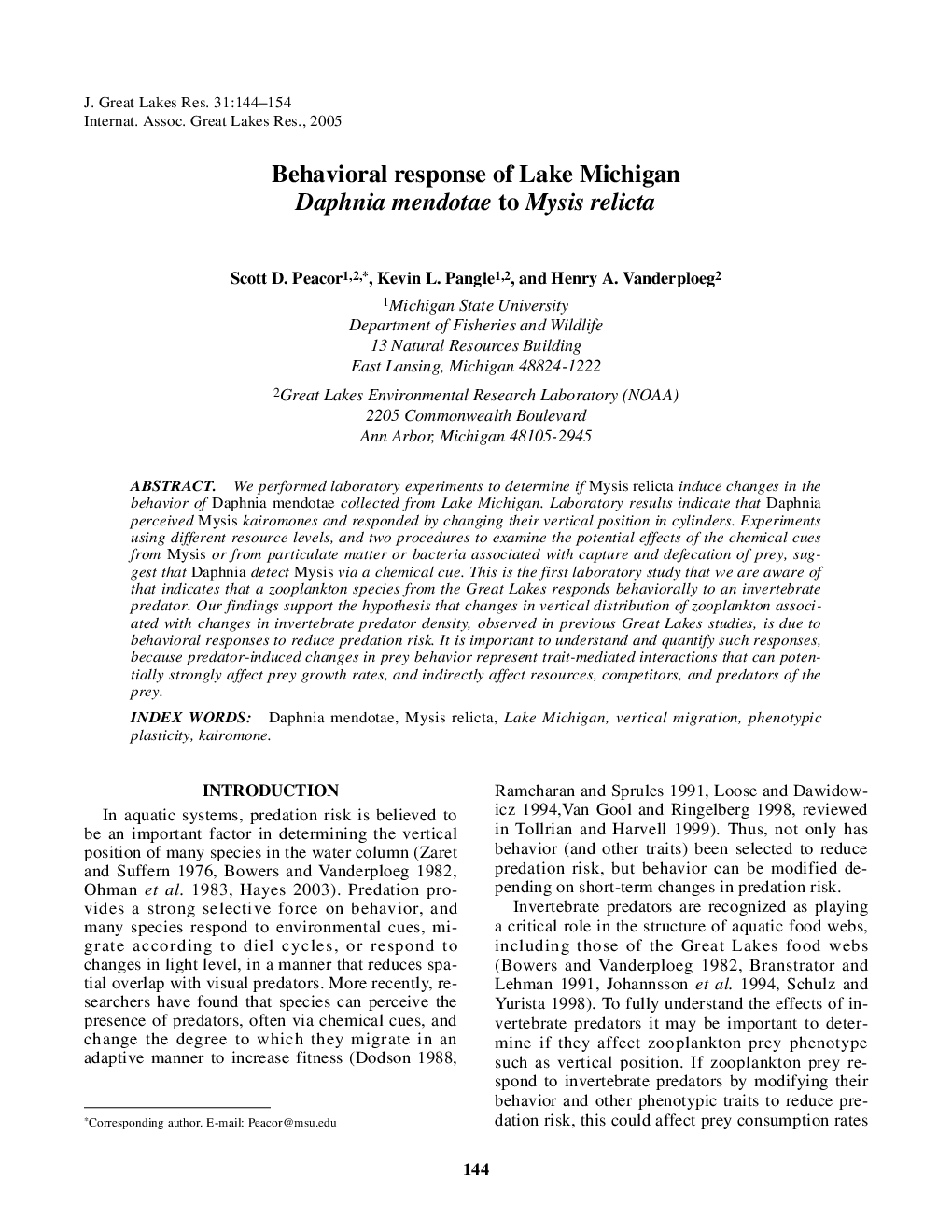| Article ID | Journal | Published Year | Pages | File Type |
|---|---|---|---|---|
| 9450015 | Journal of Great Lakes Research | 2005 | 11 Pages |
Abstract
We performed laboratory experiments to determine if Mysis relicta induce changes in the behavior of Daphnia mendotae collected from Lake Michigan. Laboratory results indicate that Daphnia perceived Mysis kairomones and responded by changing their vertical position in cylinders. Experiments using different resource levels, and two procedures to examine the potential effects of the chemical cues from Mysis or from particulate matter or bacteria associated with capture and defecation of prey, suggest that Daphnia detect Mysis via a chemical cue. This is the first laboratory study that we are aware of that indicates that a zooplankton species from the Great Lakes responds behaviorally to an invertebrate predator. Our findings support the hypothesis that changes in vertical distribution of zooplankton associated with changes in invertebrate predator density, observed in previous Great Lakes studies, is due to behavioral responses to reduce predation risk. It is important to understand and quantify such responses, because predator-induced changes in prey behavior represent trait-mediated interactions that can potentially strongly affect prey growth rates, and indirectly affect resources, competitors, and predators of the prey.
Related Topics
Physical Sciences and Engineering
Earth and Planetary Sciences
Earth and Planetary Sciences (General)
Authors
Scott D. Peacor, Kevin L. Pangle, Henry A. Vanderploeg,
